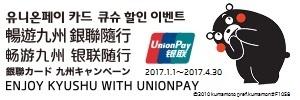ARTICLE
JAPANESE HOLIDAY IN KYUSHU (Part 3: Kunisaki and end) Nov
20/12/2015
- Author : daves
- Country of Origin : United Kingdom
- Age : 60's
- Gender :male
The next day proved to be excellent. The temperature had dropped. Originally we had booked a Japanese coach tour to visit the Kunisaki Peninsular, but by chance Wakoka who organised our whole trip met an American working for the Kunisaki local government and he offered to take us round. This area is "old Japan" but as often happens with these traditional areas, it is suffering from depopulation, so they are trying to attract foreign tourists and help to regenerate the area. The mountains rise from the sea.
We also visited the “smallest” castle in Japan. It had been partially rebuilt in the 1970s. We would not have gathered all this information on a Japanese speaking coach tour as there was hardly anything in English. I am still unsure why these areas, which are trying to attract tourists, do not invest in audios. (The ones we had at various places on Kyushu were all very good)
This peninsular claims that it is the birth of Buddhism in Japan, Kyoto could well dispute this. The temples at Kyoto are more spectacular, but we viewed a couple of local ones from the 7th century and one with wall art. The Japanese believe you must climb up to temples on very steep, uneven, natural stone steps. We even climbed up a hill to see an Anthony Gormley man. It had been part of an arts festival. From this site there are wonderful views over the bay and islands. As usual much controversy over this erection, it is on the old monks’ way, looks as if they were mountaineers! Anyway the local priest stuck out for the figure, and has kept the box in which the statue was delivered as a coffin for his death. The whole tour was interesting and we learnt so much about the local area.
This was the last area we visited on our tour of Kyushu. The whole tour had been memorable; Kyushu is not only different from the other main islands in Japan, but the different parts of Kyushu are also different from each other. The main cities each have their own historical tale to tell. The central part with all the volcanic activity and hot water supports its own culture and probably attracts most tourists. The eastern coast and peninsular were different again. Also the food varied, with pork in the south and beef in the north.
As usual nearly all of the Japanese we met we really friendly and helpful; the lack of a common language was only a problem when trying to understand history.





![Kyushu Tourism Information [ Japan ]](/blogcontest/img/common/bnr_onsen_island.png)

